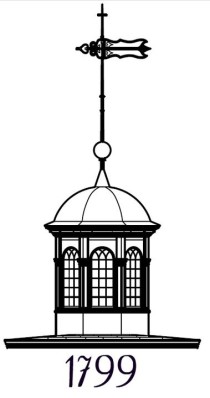
When students and historians think of immigration, they often remember places like Ellis Island; however, few people know the stories and experiences of immigrants at
other ports in United States. Philadelphia alone inspected a quarter of a million immigrants before 1873. The Lazaretto was an immigration and quarantine station in the port of Philadelphia,
operating from 1801-1895. Although this is one of the oldest surviving quarantine stations left in the world, little has been done to restore, preserve, and present its legacy to the public. The
Lazaretto envisioned and built in 1799 still stands in Tinicum Township, Essington, Pennsylvania today. While the main building has been purchased by the township (2005), it is abandoned and
inaccessible to the public. Funds are needed to restore the site, so people can see its significance in early U.S. and Pennsylvania history. It is up to the public (and students, the future) to
address this urgent need for a museum. In this middle school lesson, students will work in a jigsaw format to read and analyze a collection of primary sources describing various aspects of the
Lazaretto. The sources are divided into groups or "stations." Then, acting as historians, sociologists, curators, and archeologists, students will collaboratively prepare and share a "Discovery
Trunk" consisting of student-created artifacts that visually and conceptually portray the Lazaretto's significance and legacy. Museums and historical societies often source-out themed "Discovery
Trunks" as tools to educate youth. The trunks include reproduction artifacts, explanations, and activities. Discovery trunks give students a hands-on experience with significant sources in our
nation's history. The story of the Lazaretto will be salvaged as students present and explain their own original material objects/artifacts to the class. Teachers can use one of the extension
activities to challenge students with this real-world dilemma: How can the public be educated and persuaded to restore the Lazaretto and create a museum for posterity?
Objectives
Students will be able to:
-
1. Summarize, analyze, and interpret primary documents.
-
2. Distinguish primary and secondary documents.
-
3. Understand the role of the Lazaretto on a local and national level by explaining the rules and regulations, the duties of the physicians, the quarantine process, and periods of illness at the Lazaretto.
-
4. Empathize with, imagine, and understand the immigrant and quarantine station experience at the Lazaretto through discovery trunks.
-
5. Evaluate and critique the significance and purpose of the Lazaretto.
-
6. Apply information gained from lesson to become involved in the quarantine's historical preservation effort.
Standards Alignment
- Arts and Humanities
9.1.5. E. Knows and demonstrates how arts can communicate experiences, stories or emotions through the production of works in the arts - Geography
7.2.5.A. Describe the characteristics of places and regions. - History
8.1.7.B. Identify and use primary and secondary sources to analyze multiple points of view for historical events.
8.2.6. A. Identifies political and cultural contributions of individuals to Pennsylvania history
8.2.6. B. Identify and explain primary documents, material artifacts and historic sites important in Pennsylvania history from Beginnings to 1824
8.2.6. C. Identify how continuity and change have influenced settlement patterns (e.g. Development of towns)
8.3.6. B. Identify and explain primary documents, material artifacts and historic sites important in United States history from Beginnings to 1824.
8.3.6. C. Explain how continuity and change has influenced United States history.
8.3.7.B. Examine the importance of significant historical documents, artifacts, and places critical to United States history.
8.3.8.B. Evaluate the importance of historical documents, artifacts and places critical to United States history. - Reading, Writing, Speaking, and Listening
1.1.5. D. Identify the basic ideas and facts in text using strategies.
1.2.5. E. Read, understand, and respond to essential content of text and documents in all academic areas.
1.4.5. B. Write multi-paragraph informational pieces.
1.5.5. B. Write using well-developed content appropriate for the topic.
1.5.5.F. Use grade appropriate conventions of language when writing and editing.
1.6.5. A. Listen to others.
1.6.5. B. Listen to a selection of literature (fiction and/or nonfiction).

